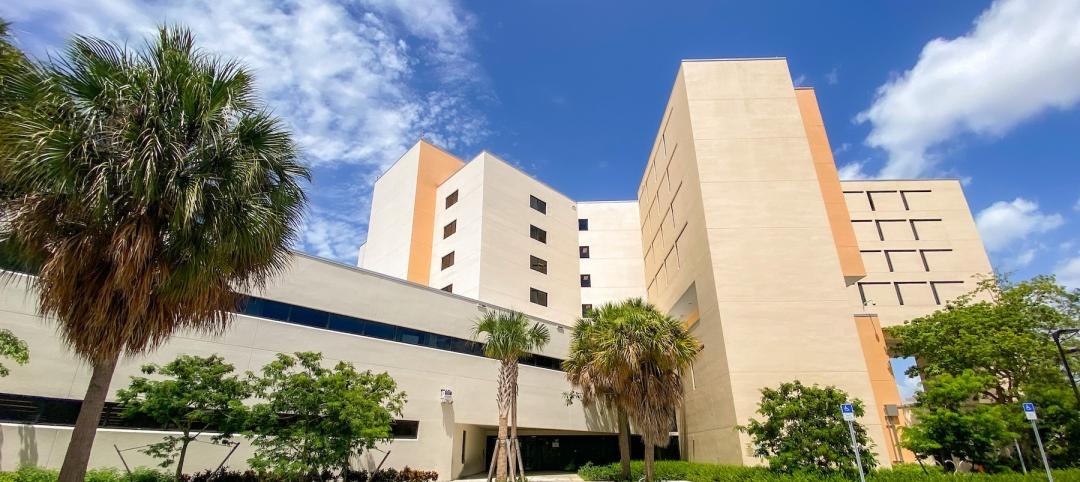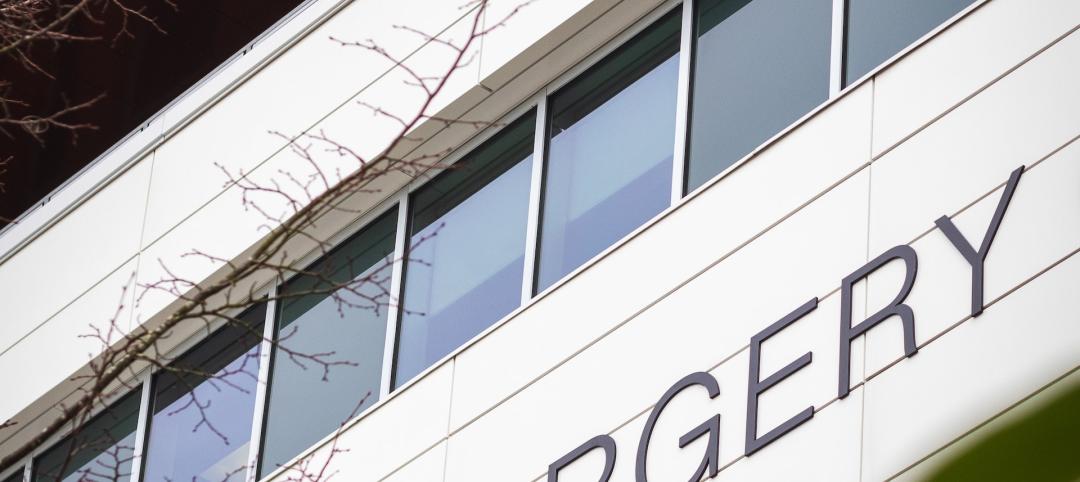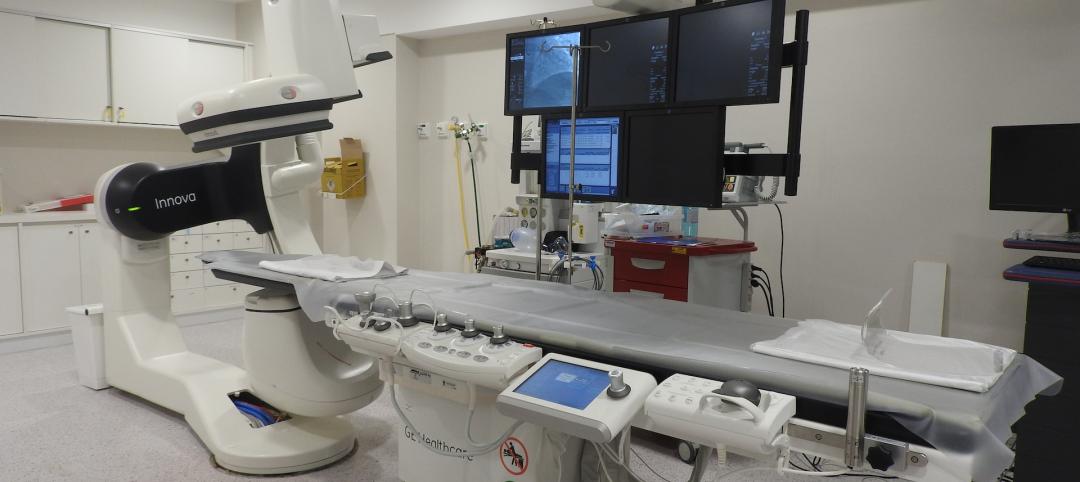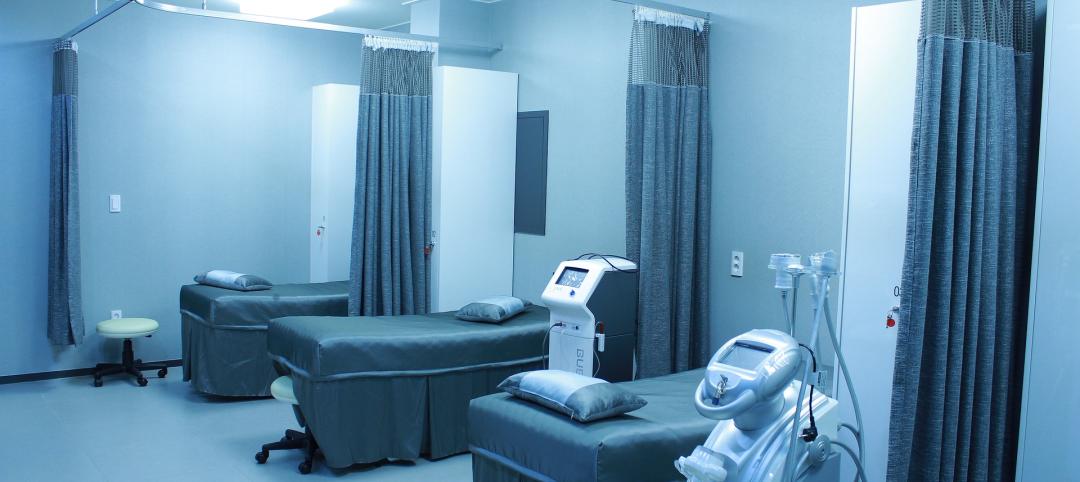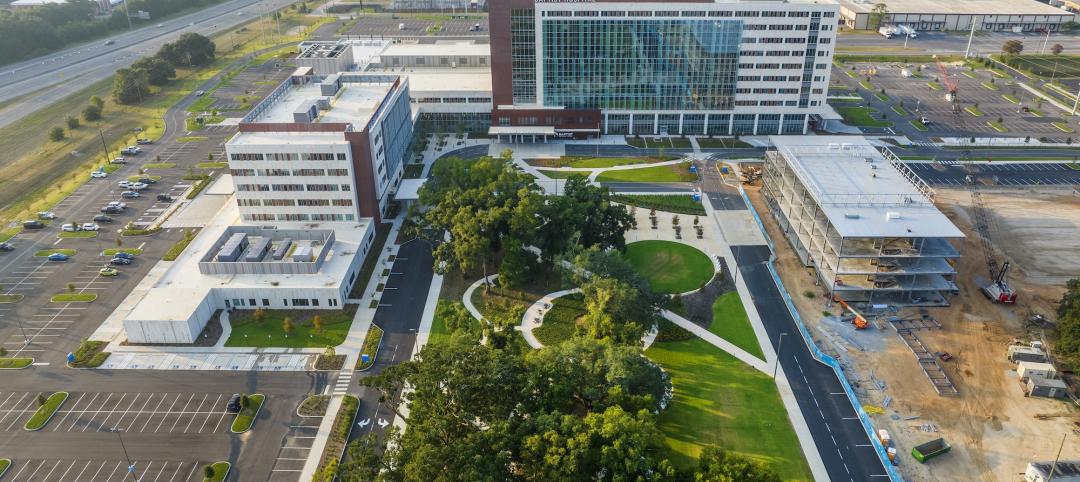As pressure increases to understand capital cost prior to the first spade touching dirt, more healthcare owners are turning to a Parallel Estimating process to improve understanding of exposure and ensure a successful preconstruction phase and subsequent bid and award. When procuring a project with a Construction Manager (CM) under a Guaranteed Maximum Price (GMP) contract (also referred to as a CM at Risk), there are definitive advantages of employing an owner’s representative cost estimator to triangulate estimating in the preconstruction process and produce a parallel estimate.
Since a GMP contract transfers project risk to the CM, Parallel Estimating or triangulation is an effective way to validate the GMP developed by the CM and understand just how much risk has been built into the number. While CM at Risk is the delivery method specifically identified, this same process is also effective with other approaches such as Design-Build and Integrated Project Delivery.
On average, GMP projects can be as much as 2-5% higher than a project contract that is procured through a hard bid with a general contractor. While there are numerous reasons for this, aside from eliminating the competitive bid process; it is primarily due to the CM accepting complete responsibility for the project and the bid documents. Thus the CM is at risk and will protect themselves as needed based on exposure, given the quality of the documentation the GMP is based on.
CM at Risk is typically used on complex and fast paced projects whereby the conditions and circumstances do not allow for a clear and easy bid process. In many instances, it is worth paying slightly more to have the CM manage and be accountable, especially if they base their GMP on insufficient documentation.
When an owner pursues a GMP procurement strategy, they are advised to engage a cost estimator to provide a secondary touch-point for risk identification and risk elimination. Having these two view points and opinions on scope, rates, quantity and constructability is an excellent way to flush out issues through the preconstruction process. This is often an unquantifiable benefit but the two contrasting views allow for a healthy discourse at the reconciliation meeting, highlighting areas of the project where both parties see risk and potential cost exposure.
CASE STUDY #1
On a low lying flood plain, this project would accommodate numerous sports fields and recreational areas. Given the nature of its elevation, it would require large earth berms to allow bridges to connect the fields to the surrounding high level campus. These berms would require large, complex geotechnical solutions and a series of gravel pyramidal “lifts” to stop subsiding.
The healthcare team employed a parallel estimating approach. At the Schematic reconciliation, both the CM and the Estimator came to the table with different approaches and different costs for assembling the berms. Since there was significant cost involved in the two approaches, the process allowed for the owner and design team to assess the cost and risk involved with both and highlighted the necessity to solve the geotechnical solution before the next round of estimating. By merely highlighting the risk, the process escalated the need for a geotechnical direction, solidifying the approach and the cost exposure early in the project.
As the CM is taking on the risk, from a business perspective, they will always understandably protect themselves when producing a GMP estimate. This is not a fault of the CM taking on the risk, but a reality of the nature of the contractual model chosen by owner. Naturally, the incentive is not always aligned with the owners desire to have the lowest cost project possible.
A parallel estimating process allows the owner’s cost estimator to help manage the “risk” or “fluff” in the number. The approach should not be so definitive that the team is too aggressive with the GMP, but through accurate quantification, seeking market rates and validating assumptions and the nature of cross checking the approach, the triangulation should breed confidence with the CM to be more finite with their number.
CASE STUDY #2
This particular project had close to a million square feet of office space. The majority of closed offices existed as standalone “pods” dotted around the space with glass walls and individual ceiling caps to make them cube like. The ceilings were specified with a product called Baswaphon, a highly technical, sound absorbing panel with a trowel applied finish. At the reconciliation, the CM had the cost represented by an allowance on a cost per square foot basis.
Given that the owner’s cost estimator was unfamiliar with the product, research on the product was conducted and the local supplier was identified and thus produced the quote that had been provided. The cost was $5 per square foot less than the allowance by the CM. This allowed the CM, a degree of confidence to reduce his GMP by $570,000. This is a classic example of how the parallel effort helps reduce the contingency held within the numbers. The estimating window is often very short as projects move fast, having two separate independent numbers often allows for a more collaborative process once around the reconciliation table.
The above case study demonstrates how the parallel estimating process reduces the GMP. The triangulation process can also eliminate risk in the other direction and often ensures the GMP is the “right” number in the sense of moving it higher.
While a CM looks to cover exposure with a GMP number, occasionally, depending on the economic circumstances, a CM could produce a low number in an effort to ensure the project proceeds and the contract is awarded. In these circumstances, a triangulation effort guards against an artificially low number and the subsequent costly aftermath of a tenuous and lengthy change order battle as the CM looks to recoup costs. The preconstruction process is never perfect and in some instances the triangulation effort helps capture scope missing from the CM’s GMP and while increasing the number, reduces risk to the client in the long run.
CASE STUDY #3
On this 80,000 sf building project, the owner employed two separate independent estimating teams to triangulate with the CM; one estimator representing the Owner and one estimator representing the Architect. Although this was an unusual approach, three numbers certainly helped mitigate the risk and get a consensus on the right number.
The local CM, experienced in the local market, was particularly inexperienced in the triangulation process and some of the misses in the preconstruction process were exposed through the diligence of the two parallel estimates. In one instance, it was identified that the CM had missed an entire elevation of the curtain wall. This was easy to do on such a complex, multi-elevation building, as the one in question. The omission was captured and therefore, all three estimates helped the team work towards the “right” number.
Triangulation in preconstruction is a great method of implementing due diligence into the financial aspects of a construction project. It eliminates risk and validates the construction cost at each stage.
Given that no one is perfect, along with the fast paced nature of construction in the US, aggressive schedules drive the process. CMs, cost estimators and the like endeavor to understand, digest and calculate construction costs from vast quantities of drawings and specs in a defined period of time. Therefore, mistakes, assumptions and “plug” numbers are very common. A thorough and methodical preconstruction process with stage gate reconciliation touch points is an excellent way to assure clients, owners and stakeholders that the numbers are solid and the project is on budget through design ahead of committing to the GMP.
There has been much success using the reconciliation process in the healthcare sector. Due to the nature of the work, the capital costs in healthcare are often significant and, given the complexity of these projects, lend themselves to this process.
Typically, owners are looking at the costs as a secondary tier, beyond just the overall construction cost. Many owners have a desire to understand how much ICU areas cost in comparison with their cardiology wing and how much the ambulatory care department costs. Given this requirement to understand the costs programmatically, employing an independent Cost Consultant to lead the process is the best solution to drive the CM to follow suit and produce a GMP with similar breakdowns and transparency. Establishing the framework early is critical to setting up the preconstruction process for success.
CONCLUSION
A solid reconciliation process will instill confidence in the project team, owners and stakeholders as they move through preconstruction and aim to manage financial constraints and establish a realistic GMP.
Employing a fiduciary in the form of a cost consultant to oversee and coordinate this process drives value for owners in numerous ways. A cost consultant can assist clients in reducing risk, validating costs and guiding the projects teams to arrive, agree and award “right” number. Following this path will ensure that the project stays on budget and stands the best chance of success without sacrificing desired scope and devaluing your investment.
About the Author: Andrew Sumner, MRICS, is Director of Cost Management at CBRE Healthcare.
Related Stories
Giants 400 | Jan 22, 2024
Top 60 Outpatient Facility Construction Firms for 2023
DPR Construction, PCL Construction Enterprises, The Whiting-Turner Contracting Company, Skanska USA, and Power Construction top BD+C's ranking of the nation's largest outpatient facility general contractors and construction management (CM) firms for 2023, as reported in the 2023 Giants 400 Report. Note: This ranking includes construction revenue for work related to outpatient medical buildings, including cancer centers, heart centers, urgent care facilities, and other medical centers.
Sponsored | BD+C University Course | Jan 17, 2024
Waterproofing deep foundations for new construction
This continuing education course, by Walter P Moore's Amos Chan, P.E., BECxP, CxA+BE, covers design considerations for below-grade waterproofing for new construction, the types of below-grade systems available, and specific concerns associated with waterproofing deep foundations.
Healthcare Facilities | Jan 16, 2024
A new mental health center in Miami offers alternatives to incarceration
The seven-story building has 208 beds.
Giants 400 | Jan 15, 2024
Top 90 Hospital Facility Construction Firms for 2023
Turner Construction, Brasfield & Gorrie, JE Dunn Construction, McCarthy Holdings, and STO Building Group top BD+C's ranking of the nation's largest hospital facility general contractors and construction management (CM) firms for 2023, as reported in the 2023 Giants 400 Report.
Giants 400 | Jan 15, 2024
Top 80 Hospital Facility Engineering Firms for 2023
Jacobs, WSP, BR+A, IMEG, and AECOM head BD+C's ranking of the nation's largest hospital facility engineering and engineering/architecture (EA) firms for 2023, as reported in the 2023 Giants 400 Report.
Giants 400 | Jan 15, 2024
Top 130 Hospital Facility Architecture Firms for 2023
HKS, HDR, Stantec, CannonDesign, and Page Southerland Page top BD+C's ranking of the nation's largest hospital facility architecture and architecture engineering (AE) firms for 2023, as reported in the 2023 Giants 400 Report.
Healthcare Facilities | Jan 7, 2024
Two new projects could be economic catalysts for a central New Jersey city
A Cancer Center and Innovation district are under construction and expected to start opening in 2025 in New Brunswick.
Designers | Jan 3, 2024
Designing better built environments for a neurodiverse world
For most of human history, design has mostly considered “typical users” who are fully able-bodied without clinical or emotional disabilities. The problem with this approach is that it offers a limited perspective on how space can positively or negatively influence someone based on their physical, mental, and sensory abilities.
Healthcare Facilities | Dec 19, 2023
A new hospital in Duluth, Minn., is now the region’s largest healthcare facility
In Duluth, Minn., the new St. Mary’s Medical Center, designed by EwingCole, is now the largest healthcare facility in the region. The hospital consolidates Essentia Health’s healthcare services under one roof. At about 1 million sf spanning two city blocks, St. Mary’s overlooks Lake Superior, providing views on almost every floor of the world’s largest freshwater lake.
Healthcare Facilities | Dec 7, 2023
New $650 million Baptist Health Care complex opens in Pensacola
Baptist Health Care’s new $650 million healthcare complex opened recently in Pensacola, Fla. Featuring a 10-story, 268-bed hospital, the project “represents the single-largest investment in the healthcare history of northwest Florida,” said Gresham Smith project executive Robert “Skip” Yauger, AIA, LEED AP. The 602,000 sf Baptist Hospital is equipped with a Level II trauma center that provides 61 exam rooms and three triage areas.




